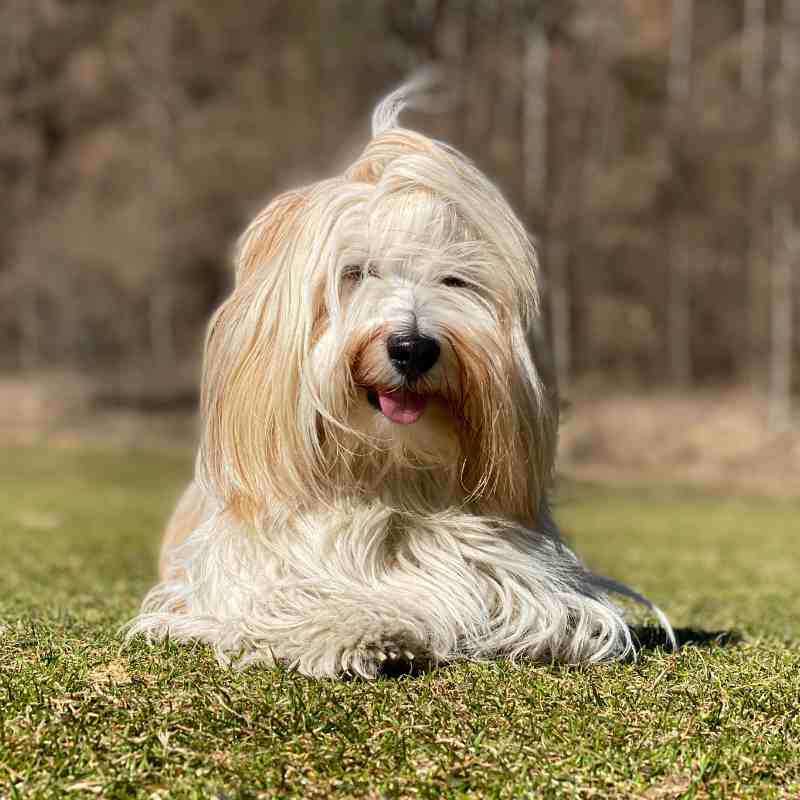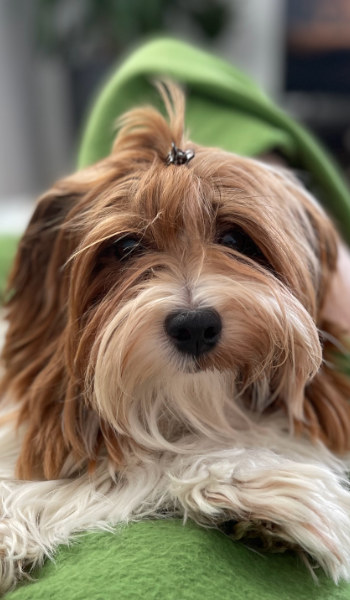





![]() The Havanese dog is a member of the Bichon family of dogs. The Bichon dog is believed to have
originated on Tenerife, the largest of the Canary Islands. Following 1492, after Christopher Columbus
claimed Cuba for Spain, the Spanish began traveling to the new island. Often accompanying them on their ships were
the small, Bichon-related dogs.
The Havanese dog is a member of the Bichon family of dogs. The Bichon dog is believed to have
originated on Tenerife, the largest of the Canary Islands. Following 1492, after Christopher Columbus
claimed Cuba for Spain, the Spanish began traveling to the new island. Often accompanying them on their ships were
the small, Bichon-related dogs.
Isolated in Cuba, over time, these dogs developed into what is now the modern-day Havanese. By the 1800s, these cheerful canines
became popular among Cuba’s aristocratic families, and even European travelers began noticing this breed. Wanting their own Havanese, many of these travelers
began taking dogs back to Europe. In just a short time, these dogs’ popularity spread to Spain, France, and England. These dogs became
a hot commodity, and even socialites such as Charles Dickens and Queen Victoria had a Havanese.
Thankfully, a few Cuban families continued to breed these dogs. In 1959, during the Cuban Revolution, a few of
these upper-class families and their 11 Havanese fled to the United States. In just a few years, some American dog
breeders took an interest in this charming breed, and they began working to increase the Havanese numbers once again.

![]() Although a toy breed, Havanese are much sturdier when compared to other
toy dogs, which can be fragile. Havanese typically stand 21 - 29 cm in height, and they, on average,
weight between 3,5 - 5,9 kg. Although they are not known to be a yappy breed, these dogs will
notify you when someone comes to the door or passes by the window.
Although a toy breed, Havanese are much sturdier when compared to other
toy dogs, which can be fragile. Havanese typically stand 21 - 29 cm in height, and they, on average,
weight between 3,5 - 5,9 kg. Although they are not known to be a yappy breed, these dogs will
notify you when someone comes to the door or passes by the window.

![]() Havanese are affectionate and happy dogs. They do not make good kennel dogs and prefer
being with their owners. They are active dogs and enjoy learning tricks and playing games with their owners.
Havanese are intelligent and trainable. They need socialization to prevent them from becoming timid with strangers.
Havanese are affectionate and happy dogs. They do not make good kennel dogs and prefer
being with their owners. They are active dogs and enjoy learning tricks and playing games with their owners.
Havanese are intelligent and trainable. They need socialization to prevent them from becoming timid with strangers.
Havanese dogs are known to be excellent with kids—these dogs are naturally
gentle and affectionate. However, due to their smaller size, it is
essential that you teach kids not to climb on your dog or pull the dog’s ears or tail.
Havanese are a smart dog breed, and many people have found them easy to train, especially for a toy breed. That being
said, most smaller dog breeds take longer to housetrain, and these dogs are no exception. Although they are also noted
to learn faster than other toy dogs, it may still take some time for your Havanese to get the hang of letting you know
when they need to go outside. Remember to be persistent, patient and to reward your dog for a job well done.
It is additionally helpful to begin socializing your Havanese as early as possible. Introducing your pal to new
people, animals, and places can allow them to have a more adaptable, well-rounded personality and temperament. A prime
example is that most Havanese do not enjoy getting wet, but if they grow up around water, then these dogs can be great swimmers.

![]() Havanese need a large amount of interaction with people. They are generally good with other pets if properly socialized, and they enjoy outside activities.
The Havanese can be a good watchdog but poor guard dog because of the small size. Occasionally, one may bark excessively if not properly trained.
Havanese require brushing and combing three or more times a week to ensure a mat-free coat. They do not require trimming.
Havanese need a large amount of interaction with people. They are generally good with other pets if properly socialized, and they enjoy outside activities.
The Havanese can be a good watchdog but poor guard dog because of the small size. Occasionally, one may bark excessively if not properly trained.
Havanese require brushing and combing three or more times a week to ensure a mat-free coat. They do not require trimming.
The Havanese breed is ideal for a person who wants a small, active dog who does not require a large yard and can be contented with frequent walks and games of fetch. These dogs do not do well left alone for long periods.
Havanese typically live from 10 to 15 years.
Havanese require a nutritious diet that is also age-appropriate. Just like humans, a dog’s diet can affect how they feel and act, which
affects their overall health. It is equally important to ensure that you are feeding your dog the correct amount of food per meal.
By consuming too much food, Havanese can quickly become overweight. Obesity is a serious health issue that can affect any dog, plus once a dog
becomes overweight, a myriad of other health problems is likely to follow.
Besides a healthy diet, another critical component to your Havanese’s happiness is exercise. Due to
their small size, they are often able to burn off their energy indoors, but they still enjoy playing outside. Whether it is for a walk, a run
around the yard, or a game of fetch, your four-legged friend will jump for joy at the opportunity to spend some time with their family outdoors.